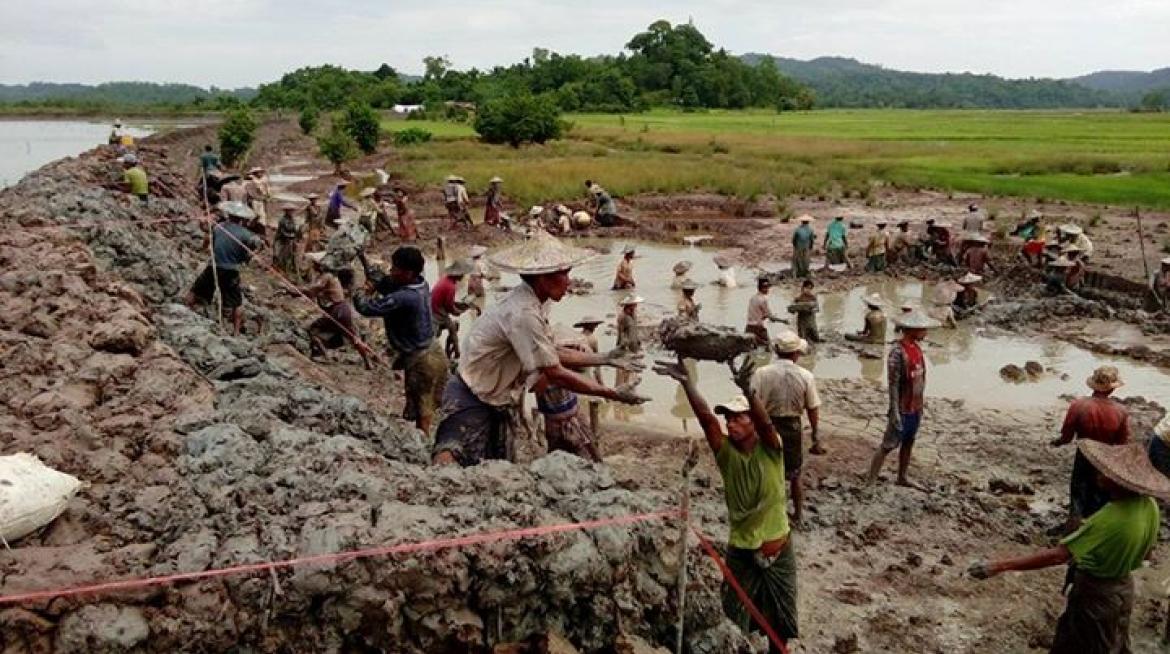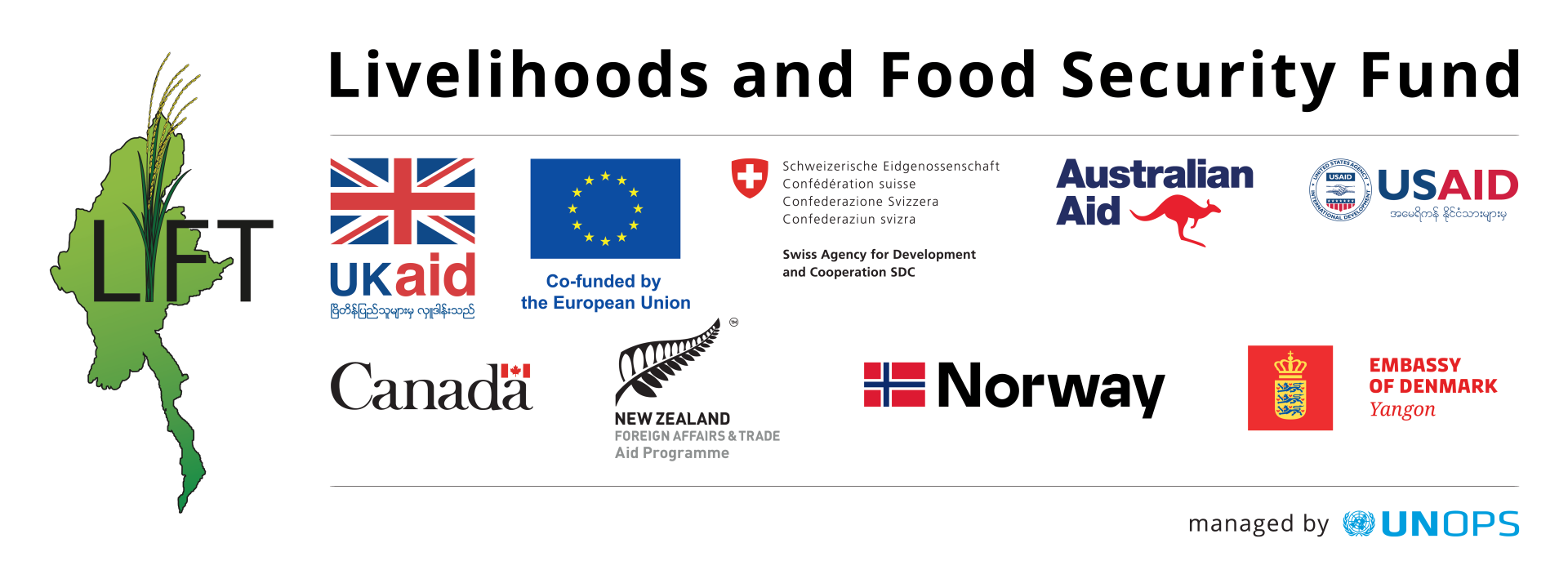
Download the LIFT's Flood Response Update brochure here. Please also visit our Latest News page for earlier reports on LIFT activity in response to the floods.
With financial support from LIFT, International Rescue Committee staff are bringing relief to flood stricken communities in Myanmar’s Rakhine State, where IRC leads the Tat Lan development programme for communities living in extreme poverty.
In Myebon township, 26,162 acres of paddy plantation were destroyed by the Cyclone Komen floods. Farmers wept when they looked out at their paddy fields and faced their ruin. Many had taken loans to invest in the seed they hoped to harvest in November.
Desperate to grow enough rice to feed their families next year, farmers took baskets of rice from their household stores of cooking rice, and tossed the grains across their fields in the hope that they might germinate and something might grow for harvest next year. Rice is the staple food in Rakhine State and on average, farming households eat one acre of harvested paddy a year.
Throughout South East Asia there is a shortage of paddy seed and the seed is selling at a premium price. In this competitive environment IRC managed to purchase 1,600 baskets of fast growing paddy seed from Vietnam, for farmers whose crops were destroyed by the cyclone’s floods.
As they loaded sacks of rice onto their heads and waded through water, farmers thanked Tat Lan.
IRC’s Tat Lan Coordinator in Myebon, Cherry Soe, was moved by the villagers’ response. “Their eyes filled with tears of appreciation when they received a basket of paddy seed to replant their acres. ‘Thank you IRC and Tat Lan’, they said. I felt emotional myself, and I felt proud to be on Tat Lan’s IRC team,” she said.
Restoring Flood Damaged Infrastructure
To protect paddy fields from salt water intrusion along the Myebon, Minbya, Kyaukphyu and Pauktaw coastlines in Rakhine State, the Tat Lan programme has built 93 miles of embankments, 31 sluice gates and 27 culverts.
Flooding from Cyclone Komen and the ‘king tide’ that surged on the seashore created extreme forces on the newly built infrastructure.
Fortunately, across the four Tat Lan townships only six miles faltered due to the collision of the monsoon floodwaters, and the spring tide.
The sea water combined with the fresh water deluge to create pressure on both sides of embankments and sluice gates, over flowing and breaching them, then eroding walls.
 Landless community members were quickly organised into cash-for –work teams to rebuild embankments so that the paddy fields could be replanted. The 1170 foot (400 metre) break in the 3.7 mile Zee Pauk embankment cost $4,400 to repair.
Landless community members were quickly organised into cash-for –work teams to rebuild embankments so that the paddy fields could be replanted. The 1170 foot (400 metre) break in the 3.7 mile Zee Pauk embankment cost $4,400 to repair.
It took 100 cash-for-work labourers five days to rebuild the mud sod wall, working quickly during a break in the rains. The embankment was repaired with urgency before the paddy field, that had been washed away, could be replanted with fast growing paddy seeds of a salt tolerant variety.
Tat Lan’s infrastructure cash-for-work teams are chosen by communities from their most vulnerable families. One person from each household is selected to work in the team earning 3,000 kyats a day – a valuable cash injection for fragile families who all thanked Tat Lan for their employment.
Flood recovery
Throughout Tat Lan’s 214 villages, which have approximately 642 ponds and wells, 75 water sources were contaminated or damaged. Responding immediately with funds from LIFT, the Tat Lan team worked with teams of cash-for –work village labourers to restore water sources before the end of the monsoon rains. Damaged ponds were submerged by flood waters and swirling sea currents that filled them with salty water and muddy silt that undermined the strength of their walls. Racing against the rain, these infrastructure teams cleaned out the village ponds and wells that are their communities’ only source of fresh water.
In 52 Myebon villages, 51 water sources were contaminated – 10% of the ponds in the IRC supported township. First, over a period of three days, ponds were pumped out to remove the turbid, salty water. Then teams of villagers employed in social protection schemes, used basins to scoop out silt and mud on the bottom of their pond.
At Kaw village, 60 labourers worked intensely for four days to empty their pond and used the mud to build an embankment around the top, to protect the water from animals and further flood or salt water intrusion. Then, for extra protection villagers dug a trough to capture future flood waters and divert them from their pond.Finally, the ponds were treated with chlorine, to kill bacteria, and lime to balance the Ph level and settle the sediment.
--------
The Tat Lan Programme was developed by LIFT after Cyclone Giri in 2012. The Tat Lan Consortium of INGOs includes IRC, Save the Children, Oxfam, CARE International, and Better Life Organisation.


